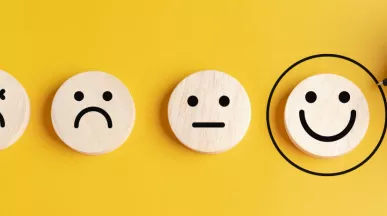Teamwork and Collaboration Lead to Healthier Company Culture

By Catherine Turner
Effective teamwork and collaboration are important superpowers for any organization with benefits for both individual employees and the company as a whole. We’ve all felt the exhilarating power of effective teamwork, especially when working together on something challenging.
We have only to look back to the onset of the pandemic to recognize how vitally important teamwork was, and still is, to organizational culture. We needed it to ensure we could keep working and keep serving customers in the face of seemingly insurmountable odds.
But, to a large degree, we did it — and did it well.
As Asutosh Padhi points out in a McKinsey “My Rookie Moment” episode, he learned this firsthand in his early years with the company where he was deployed to an engagement in Korea. “It was my first experience with a truly international team and what I realized was the power of diversity, and how folks came at the problem in many different ways,” he says.
We are simply better together. Here’s why.
Teamwork Promotes a Positive Workplace Environment
We know how important inclusion is and if we didn’t, we have plenty of studies to turn to that demonstrate the power of an inclusive culture — and how much employees today value companies’ diversity, equity, and inclusion efforts.
Consider how quickly tools like Zoom became go-to resources to maintain work relationships and connections among teams and team members. Humans are social creatures and we innately recognize that coming together results in positive outcomes, personally and for businesses.
Inclusion through teamwork and collaboration promotes diversity in thought, experience, education, background, and expertise. But don’t lose sight of those key insights! Sharing these insights and accomplishments through employee engagement technology platforms like Connects promotes employee happiness and encourages the day-to-day inclusive behaviors and great outcomes that can be captured, shared, and retained.
Two Heads Really Are Better Than One
The old saying “two heads are better than one” really only hits the tip of the iceberg. Multiply two heads by dozens, hundreds, or thousands of employees all pulling together to contribute to a shared outcome and you’ve got an engaged workforce, long term.
There’s evidence to back up this old saying. Research by Dr. Patrick Laughlin with the University of Illinois at Urbana-Champaign, reported by Atlassian’s Work Life reinforced the notion that teams outperform individuals. This, says Laughlin, can be attributed to “the ability of people to work together to generate and adopt correct responses, rejected erroneous responses, and effectively process information.”
More can be achieved. Insecurities are diminished and innovation can thrive as employees understand that their teammates have their backs. Teamwork creates efficiencies to complete projects and tasks faster. Different perspectives drive creativity and better results. And bottom line benefits, too: engaged employees reduce turnover rates.
Teamwork Leads to Personal Growth
Working with others is critical in any environment. Truly there is no role within any company that does not benefit from collaboration with others in the department, division, or organization — or even outside the organization.
The personal growth that occurs through teamwork is important and valued by employees. In fact, LinkedIn’s 2022 Workplace Learning Report cited “opportunity to learn and grow” as the top valued factor that “defines an exceptional work environment.” That’s up from holding the ninth spot in importance in 2019. Teamwork drives shared learning and individual growth.
Obstacles Can Be Overcome
Obstacles — even small ones — can be extremely overwhelming when attempting to manage them alone. Pulling together to rely on the strengths of a team can make even the toughest obstacles less daunting. Shared problem-solving offers big benefits for individuals, teams, and the organization as a whole.
Consider the last obstacle you faced. Chances are you quite quickly reaching out to others to help you tackle that obstacle. It’s the natural thing to do. In workplaces, teams have and continue to tackle a wide range of obstacles, recognizing that by working together remarkable things can be accomplished.
Stress and Burnout Can Be Minimized
“We’re all in this together” is a trite phrase precisely because it’s true. There is strength in numbers and shared experiences. When we share the load, responsibilities are spread out across all team members so there’s less burnout and less stress to handle.
In addition, teams innately promote team building, which fosters work friendships. This helps combat stress and boost morale, and leads to better performance.
Better Communication Breeds Psychological Safety
McKinsey tells us that research shows “psychological safety is a precursor to adaptive, innovative performance — which is needed in today’s rapidly changing environment—at the individual, team, and organization levels.”
Maintaining a climate of psychological safety is an important management mandate which has become even more important with an increase in hybrid and remote work, as Harvard Business Review points out.
The relationship between communication and psychological safety is integrally intertwined and symbiotic. Better communication breeds psychological safety. Psychological safety boosts innovation. Because of the trust established within teams, employees feel safer voicing their opinions which leads to more effective collaboration.
There’s no doubt about it. Teamwork is an essential employee engagement idea and critical to a company’s success. When companies are looking for ways to improve team culture and keep employees engaged at work, encouraging teamwork has the power to boost engagement, breed innovation and bolster the bottom line.





